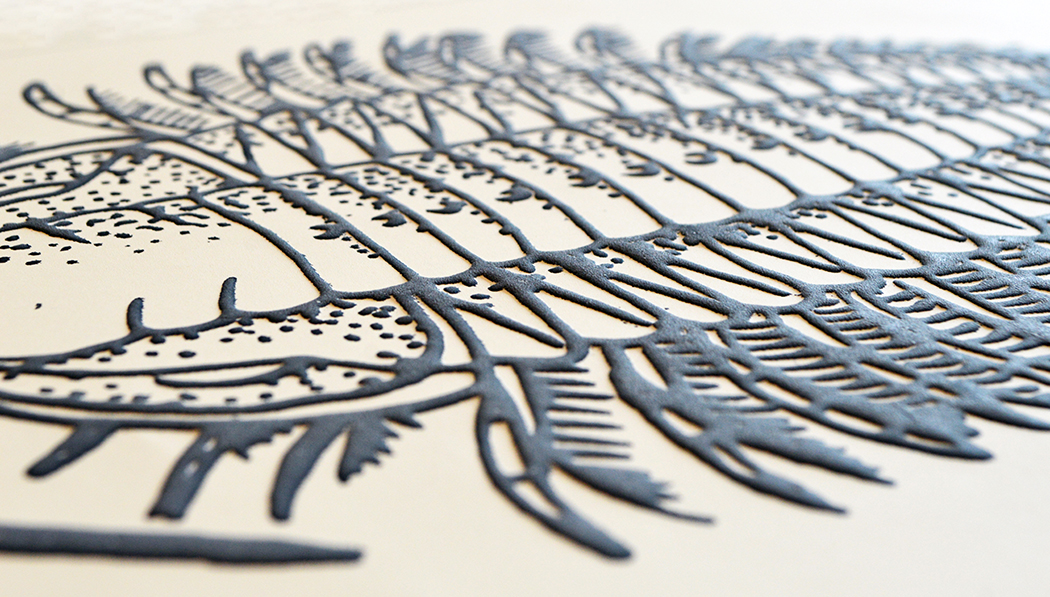
In photos, the children sit on the Nebraska State Capitol rotunda floor, their hands sweeping across the cool tiles, seeking out the pieces that feel like a tooth, a spine, the edge of a prehistoric creature.
But one photo tells a bigger story. In it, a teenager sits with a piece of paper in his lap, his fingers reading the translated content of “Fossils on the Floor,” by Bob Diffendal, emeritus professor in the Conservation and Survey Division of UNL's School of Natural Resources. The outline of an ancient trilobite is raised up from the paper, its features apparent.
In addition to the raised-outline images, his teacher, Mary Farris, also had turned the descriptions from the book into Braille, giving her blind and visually impaired students the ability to work independently to visualize the imbedded art in the Capitol floor.
“It was a great experience,” she wrote in a letter to Diffendal, “a wonderful opportunity to learn, and just plain fun at the end of the day. What kid doesn’t like to crawl around on the floor (or teacher for that matter)!”
Farris, an educator at the Nebraska Center for the Education of Children Who Are Blind or Visually Impaired in Nebraska City, said she’s always on the look-out for curriculum materials she can adapt to meet the special needs of her students. The “Fossils on the Floor” books, which pairs the Capitol mosaics with scientific drawings and other information, fit the bill.
"These images captivate thousands of visitors each year," Diffendal said when his books were released. "I've heard parents, tour leaders and teachers struggle to describe what they're looking at when they're looking at the mosaics. I wanted to put something together to give them a fighting chance at telling kids what these mosaics are depicting."
“What a wonderful surprise when I opened (Farris’) letter and saw how she used the book,” Diffendal said. “I would have never thought of that use.”
Farris said the books were the perfect teaching tool for both science and history subjects.
“It not only was appropriate and relevant to the course I was teaching, it also picked up on many of the previous lessons I have taught in my social studies curriculum,” she said.
The pair now are discussing the possibility of turning parts of the “coloring” book into a form that kids with vision issues can use.
For those interested, both publications still are available for sale at Nebraska Maps and More Store on the first floor of Hardin Hall at 33rd and Holdrege streets. The book also can be purchased online at marketplace.unl.edu/nemaps or over the phone at 402-472-3471.
— Shawna Richter-Ryerson, Natural Resources
More details at: http://go.unl.edu/rqzg